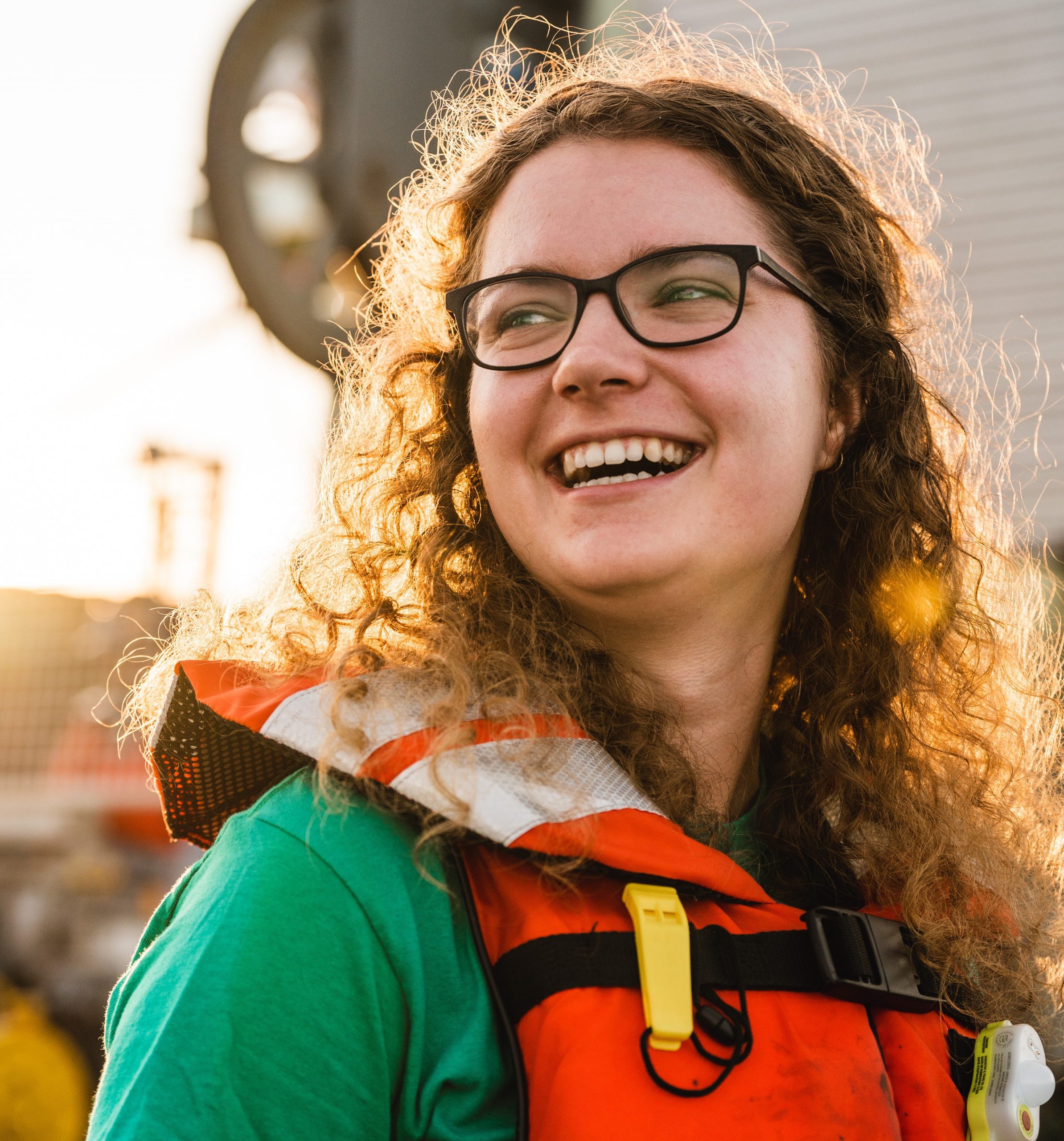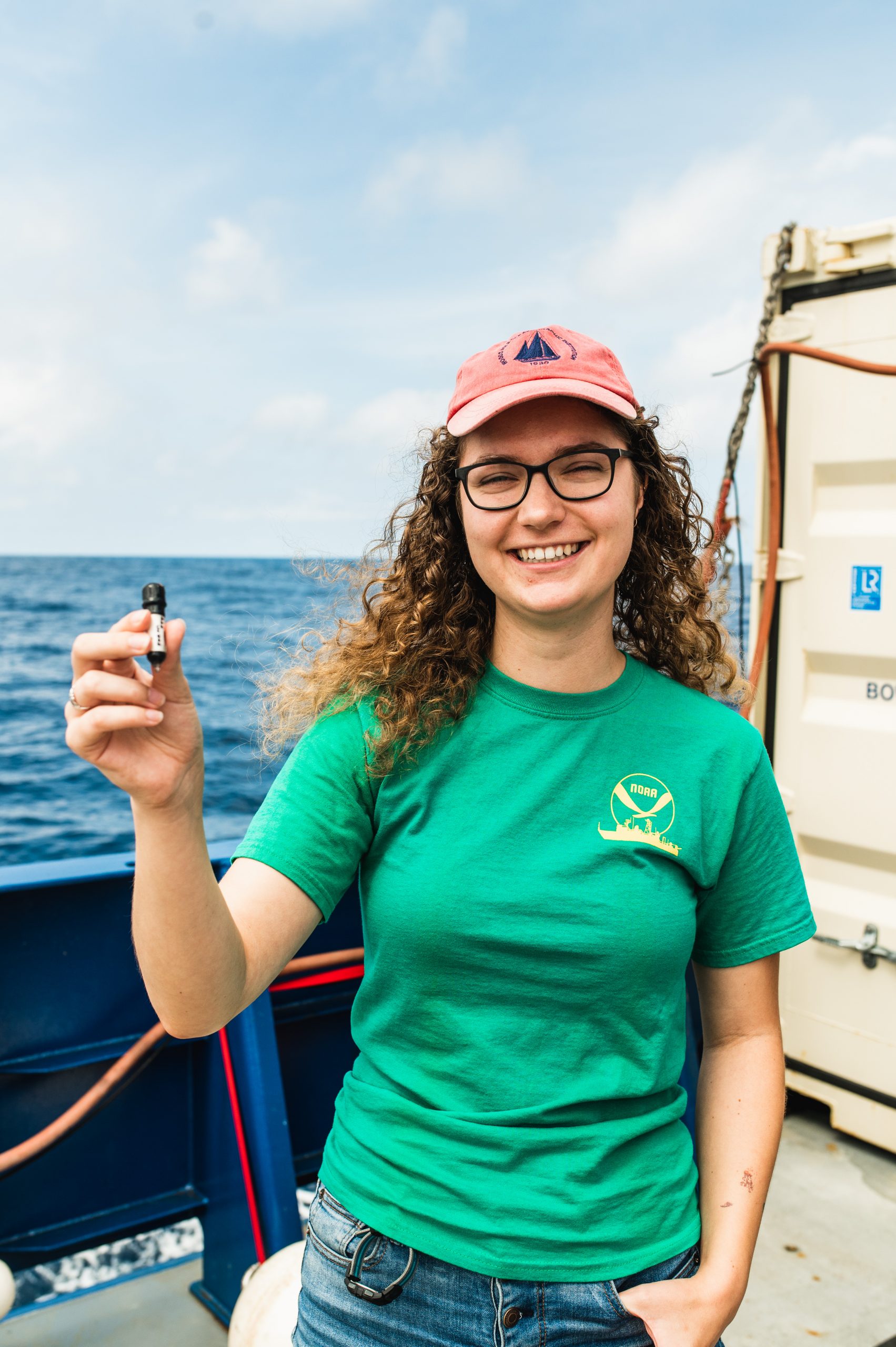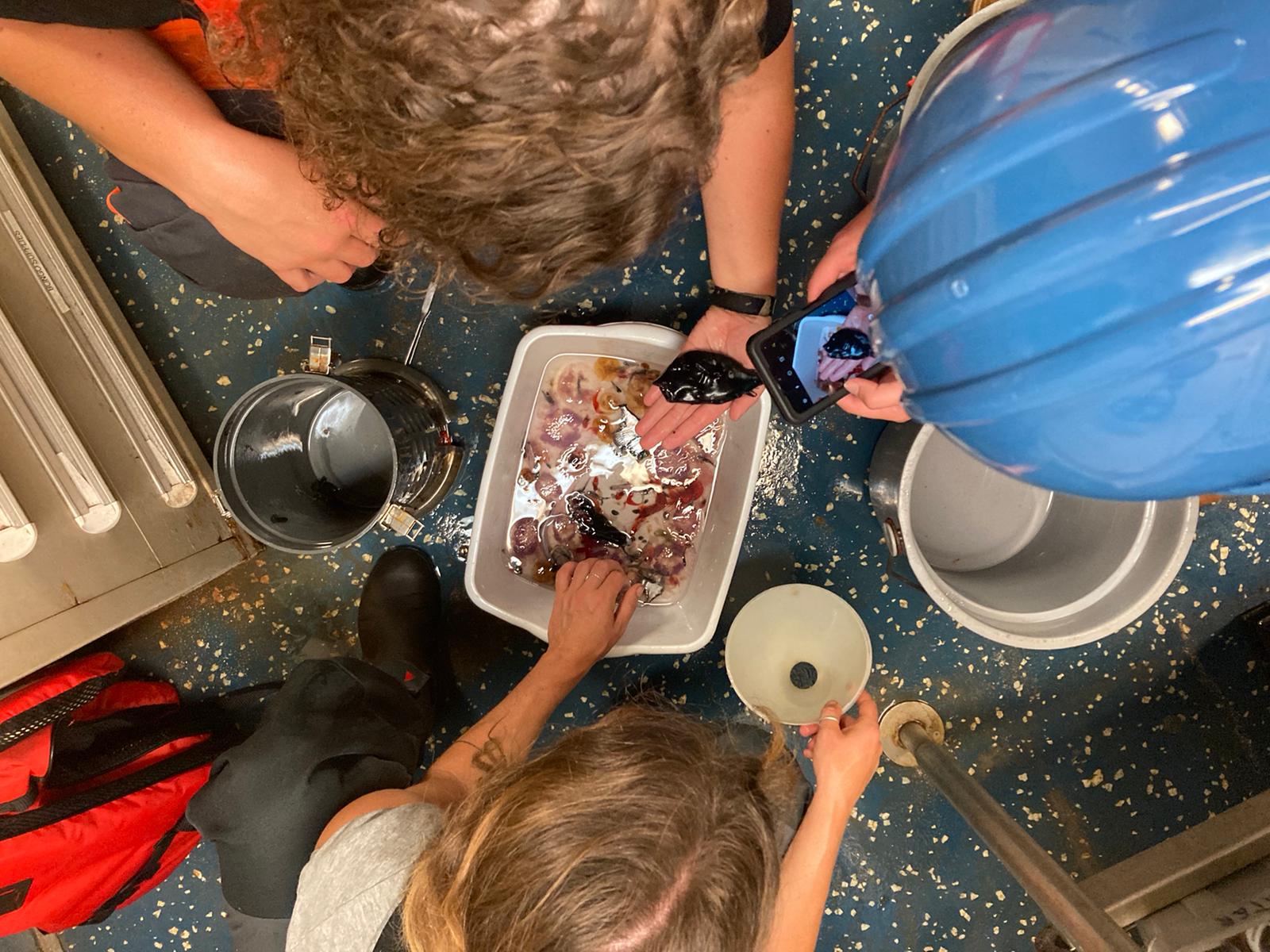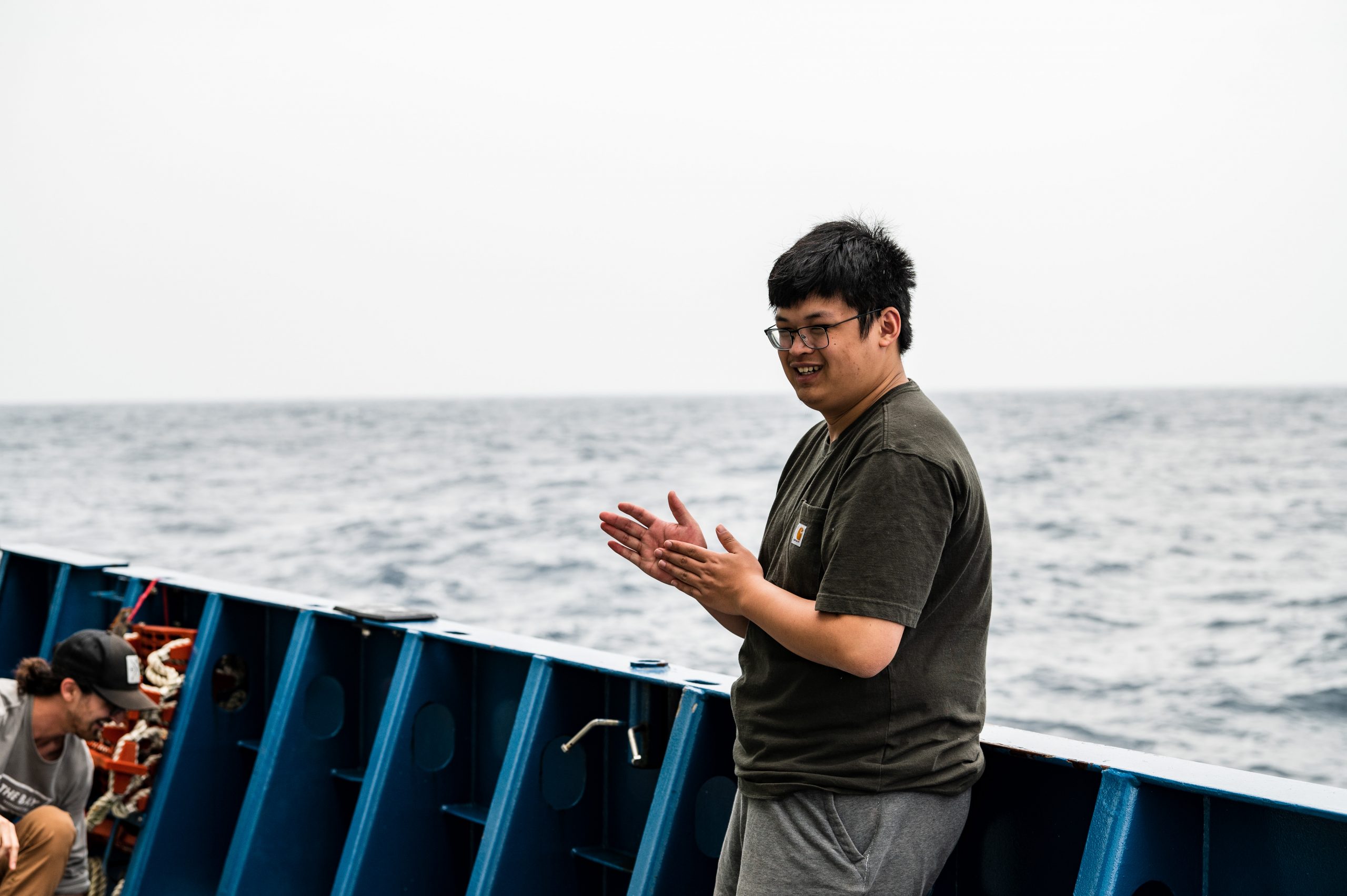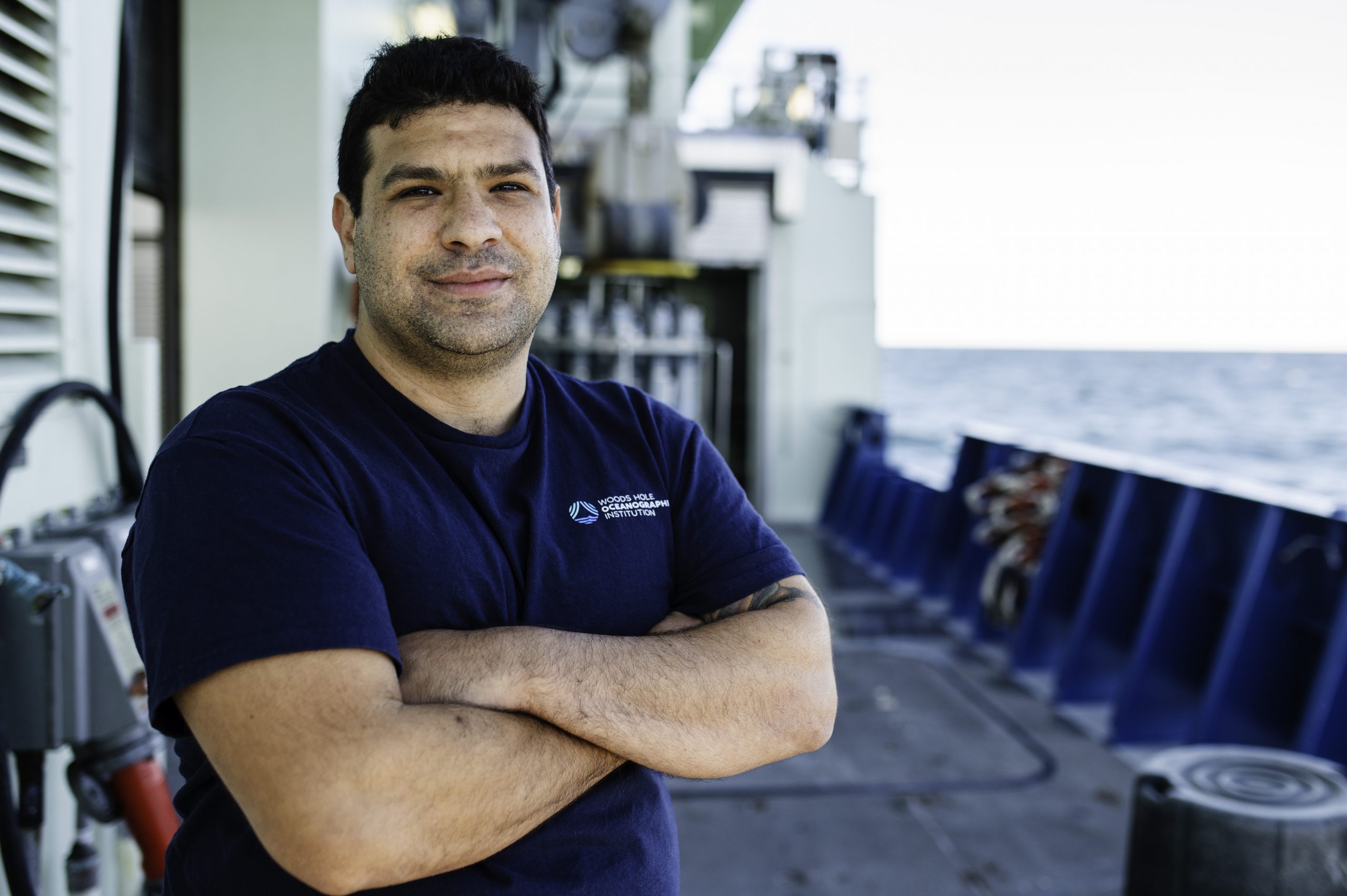Spotlight: Ciara Willis October 6, 2022
Ciara Willis is a PhD. candidate in the MIT-WHOI Joint Program, focusing on biological oceanography in WHOI fish ecologist Simon Thorrold’s lab. Aboard the NOAA ship Henry B. Bigelow for the August 2022 research cruise, Willis and other assistants helped deploy, recover, and process samples from the MOCNESS tow net. This meant, quite literally, rolling up her sleeves to sift through the zooplankton soup–oftentimes in the middle of the night!
While onshore, Willis examines not only biological oceanography, but policy as well. This includes how governments across the globe communicate and work together to manage shared marine spaces and fisheries. She shared her unique perspective and experiences with us while steaming back to shore on the Bigelow.
-Andrea Vale, OTZ field correspondent
Can you briefly describe your research?
My research is focused on quantifying the reliance of migratory top predators on the ocean's twilight zone.
How many research cruises have you been on so far, and how does this one differ from the others?
I came aboard the Bigelow to collect low- to mid-level twilight zone animals so that I can examine their food web linkages. This helps set the stage for my top predator work on tuna and swordfish.
I’ve been on nine cruises so far, on Canadian, American, German, and Norwegian vessel, for a total of about 20 weeks at sea. I have sampled animals with trawls before, and I have been on an Ocean Twilight Zone project cruise before, but this was my first time doing trawls in the twilight zone! It was really exciting to see the twilight zone animals first hand–they are so cool!
You have experience with not just hard science, but the policy surrounding it. Could you describe that?
Before starting graduate school, I worked for a year in fisheries economics and management. Specifically, I investigated the implications of unequal subsidization between fishing nations in the Western and Central Pacific Ocean and the Indian Ocean and shared my findings with the relevant fisheries management organizations. This experience has been highly beneficial to my PhD. research, which includes bio-economic modeling of simultaneous fisheries on twilight zone fish and migratory predators.
What do you want people to understand about the ocean twilight zone?
We are more connected to it than we realize! The twilight zone provides many important ecosystem services, such as acting as an important food source for commercially fished species like tuna and swordfish, and exporting carbon to the deep ocean.
What are your daily tasks and responsibilities on the ship?
I was a member of the MOCNESS team, so we deployed the MOCNESS day and night to determine what depths are frequented by which animals, and to collect those animals for food web analyses. When the net comes on deck, we quickly pull out all of the fish and large animals. We then painstakingly filter and sub-sample all of the smaller animals for a variety of projects back on shore. It can take up to five hours to process a single MOCNESS deployment!
What are your biggest challenges while conducting research at sea?
Being prepared for the unexpected! It’s very unusual for everything to go smoothly and according to schedule. Equipment can break, scientists or crew can get sick, bad weather can halt operations, so it’s critical to stay flexible and think creatively to accomplish science goals under rapidly changing conditions.
A simpler answer is that it’s very tiring working long shifts at sea, often doing physically demanding work. It can be challenging to remind yourself to take breaks and otherwise take care of yourself when you’re caught up in the time-sensitive science. This is where it’s great to have a good team of people who look out for one another and create a positive, healthy environment!
What is the most fulfilling part of doing science at sea?
Finishing a long night of collecting and processing samples and seeing all of the jars, vials, and documents all nicely lined up and ready for the next steps back on land. The most fun part is seeing cool animals!
What are some things you pack for a research cruise that might surprise people?
I usually bring something personal to make my bunk feel a bit more “homey.” This time I brought my plush shark.







